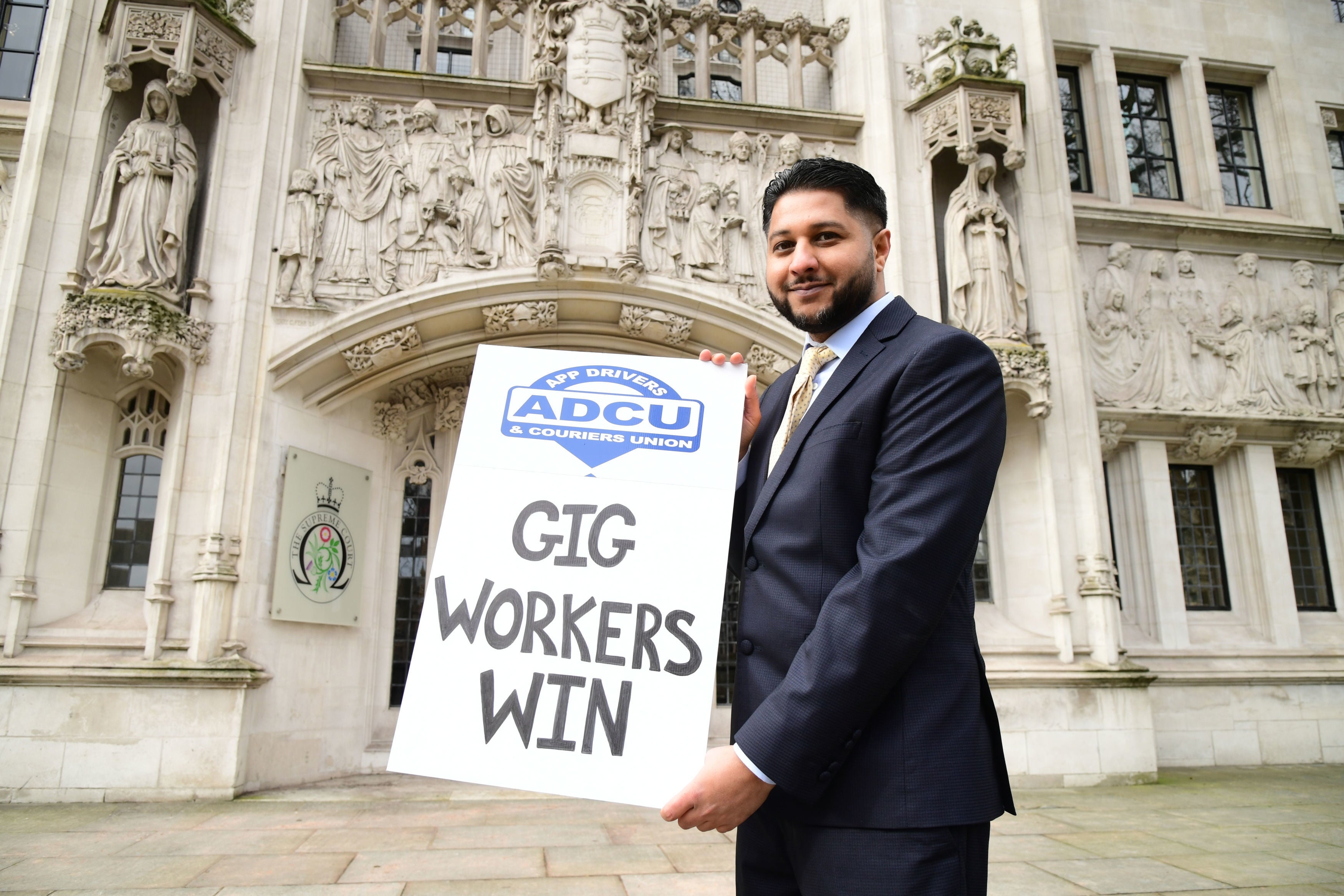What does the Uber ruling mean for the UK gig economy?
To address the complex challenges thrown up by the rise of the gig economy we need action from ministers, not just rulings from judges, argues Ben Chu


It’s been described a “landmark” ruling for the gig economy – but precisely what fresh territory does it signify?
The Supreme Court ruled on Friday that a group of 35 Uber drivers who took legal action against the company were not “self-employed” and should not have been treated as such by the Silicon Valley technology company, despite what their contracts said.
They were, then, legally entitled to benefits such as paid leave and the minimum wage.
It’s certainly a victory for those workers and a defeat for Uber, which has failed in its final attempt to overturn previous court judgments to the same effect. These workers will now be in line for compensation.
But what does the ruling mean for the wider gig economy and those who work in it – a group that, by some estimates, now covers as many as 1 in 10 working age adults? The frustrating answer is that it remains unclear.
Uber has suggested the ruling will not have major impacts on its business, saying it has already scrapped some of its contentious conditions for UK drivers since the case was first brought in 2016.
They can now, for instance, see the price and destination of the booked order before accepting it on the app and they suffer no penalties for rejecting trips.
But the Supreme Court’s verdict that these drivers were formally working for Uber for as long as they were logged onto the app (not only when they are carrying a paying passenger) could yet be financially significant.
If that rule is applied to all Uber’s 65,000 UK drivers it could well push up the company’s overall costs.
That might reduce Uber’s competitive advantage and, ultimately, reduce the number of its drivers. To the extent that Uber’s ubiquity on the streets of UK cities stems from underpaying and under-protecting drivers, that should not be lamented.
What the ruling does not do, though, is to change the fundamental ambiguity that exists over the legal status of gig economy workers.
Under the law there remains a three-tier division in the status of people who work – “employee”, “worker” and “self-employed” – with different rights ascribed to each.
And there will remain confusion about which category individuals fall into, particularly as the digital services economy expands, creating ever more app-mediated jobs.
Some lawyers have suggested this ruling is a signal the courts will step in to protect gig workers’ rights regardless of what their contracts say. Others predict it will open the door to many further legal cases brought by gig economy workers.
Perhaps it will. And if that prompts technology firms to be more risk averse over attempting to cynically squeeze their workers’ pay and conditions, then that would be welcome.
Yet it would be better for the government to be more proactive in stating what rights and expectations gig economy workers have so companies are not tempted to play this game.
This court ruling does not resolve a fundamental and underlying tension. While some workers, legitimately, feel exploited by technology companies, others genuinely value the freedom and flexibility that apps like Uber give them over when and how they work (with many doing this work as a top-up to other earnings).
The fiendish challenge is to get a better deal for the former while preserving the benefits enjoyed by the latter.
This is not a new problem. The independent Taylor Review in 2017 – commissioned by Theresa May – directly addressed it.
That review called for the outdated and confusing category of “worker” to be renamed as “dependent contractor” and for this group’s status and rights to be clearly specified in law.
It also suggested ministers adapt piece rates legislation, to ensure dependent contractors will (on average) receive a rate above the minimum wage, while maintaining the useful flexibility for workers and the companies.
But ministers rejected the piece rates proposal and have still not acted to sharpen the definition of workers’ status and rights in law.
We’re also still waiting for details of the single enforcement body for workers’ rights – promised in the 2019 Queen’s Speech – to materialise.
The consequence of this historic neglect of workers’ welfare has manifested in this crisis. There have been zero punishments for Covid safety breaches by firms from the Health and Safety Executive since the pandemic began, despite thousands of complaints.
While ministers look the other way and prevaricate, the courts have made the running instead. The problem is that the courts cannot, on their own, address the complex economic challenges and trade-offs presented by the rise of the gig economy.


Join our commenting forum
Join thought-provoking conversations, follow other Independent readers and see their replies
Comments